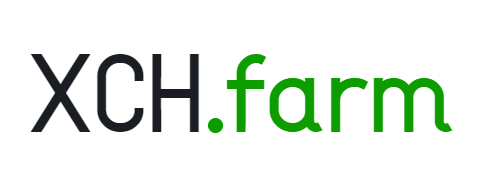Frequently Asked Questions
Intermediate questions
As the total netspace increases, individual farming rewards decrease due to higher competition; monitoring netspace growth helps adjust farming strategies accordingly.
Store private keys and mnemonic phrases in secure locations, use hardware wallets, avoid sharing sensitive information online, and consider multi-signature wallets for added security.
Set up a harvester on a separate machine connected to your main farmer node to offload farming tasks, increase efficiency, and reduce resource consumption on your primary system.
High hardware or network latency can negatively impact your chances of winning blocks; optimize your system and network connection to ensure timely response to challenges.
Use Chia calculators or tools that consider your current plot count, total netspace to estimate your Time to Win (expected time to earn a block reward). See the menu for some of these tools.
Utilize third-party tools, parallel plotting, and custom configurations to optimize your hardware, explore MadMax plotter for faster plotting, and monitor your farm's performance.
Pooling allows farmers to join forces and share rewards, increasing the chance of consistent earnings; choose pools based on fees, payout structure, reliability, and community reputation.
Use the Chia GUI, CLI tools, or a pool dashboard to track your farm's status, plot count, estimated rewards, and potential issues in real-time.
Chia's PoST consensus algorithm promotes decentralization and network security by reducing the resources needed for participation, making it more accessible and less prone to centralization, while maintaining robust security against attacks.
Expert questions
To create a smart contract in Chia, you need to learn the Chialisp language, create a .clsp file for your smart contract, and write your contract's logic using Chialisp functions and syntax.
To debug Chialisp code, use the Chia-blockchain development tools like chia-blockchain and clvm_tools to compile and run your Chialisp code, test it with sample input data, and analyze the output.
To integrate Chia into your existing application, use the Chia RPC API to interact with the Chia blockchain, send and receive transactions, query blockchain data, and manage wallets and keys programmatically.
Yes, you can create tokens on the Chia blockchain using Chialisp and smart contracts. Implement a custom token protocol by creating a contract with specific rules for minting, burning, and transferring tokens.
In a production environment, secure Chia private keys using hardware security modules (HSMs) or secure key management services, restrict access to keys with role-based access control, and employ encryption for key storage and communication.
To monitor the Chia network, use the Chia RPC API or WebSocket API to subscribe to network events, such as new blocks, transactions, or specific smart contract events, and implement custom logic to handle these events in your application.
Optimize Chialisp code by minimizing the number of costly operations, using efficient algorithms, leveraging memoization when possible, and reducing unnecessary data storage or retrieval.
Yes, there are Chia blockchain explorers like Chia Explorer and APIs like the Chia RPC API that provide access to historical blockchain data, including transactions, blocks, and network statistics.
To estimate the cost of running a Chialisp contract, calculate the contract's resource consumption in terms of CLVM cost, using the Chia development tools. Consider factors like execution time, memory usage, and blockchain storage requirements.
Plotting questions
A modern multi-core CPU, at least 4 GB of RAM, and sufficient storage space (SSD or NVMe recommended) for temporary plotting files and final plot storage.
Plot creation varies depending on hardware and plot size, typically ranging from several minutes to over an hour.
The standard plot size, k=32, is recommended for most farmers as it has lower hardware requirements to creation.
Yes, you can create multiple plots simultaneously, but it's essential to ensure adequate resources to prevent bottlenecks. With recent improvements in plotting such as GPU plotting, creating multiple plots simultaneously on one machine is not advantageous.
A k=32 plot requires approximately 101.3 GiB (108.8 GB) of storage space when finished, with temporary files requiring around 239 GB during the plotting process.
The temporary directory is where intermediate files are stored during the plotting process, while the final directory is where the completed plot is stored for farming -- typically a HDD.
Improve plotting speed by using faster storage devices (SSD or NVMe), increasing parallel plotting processes, and adjusting settings according to your hardware capabilities.
This depends on your hardware; you can find recommended settings by consulting Chia community resources, forums, or using online calculators that consider your specific system configuration.
The Chia plotting process does not support pausing or resuming directly; however, third-party plotting tools may offer this functionality.
A completed plot will have a .plot file extension and can be checked for validity using the Chia GUI or CLI tools to ensure it's recognized and ready for farming.
You can move plots between storage devices by simply copying or transferring the .plot files, ensuring the new location is correctly configured in your Chia farming software.
The "K" value represents the plot size, with higher values requiring more storage space and offering a proportionately greater reward potential; k=32 is the standard and recommended size for most farmers.
Ensure your plots are efficiently participating in the farming process by regularly checking the Chia GUI or CLI tools for plot count, farming status, and potential issues.
To avoid accidental overwriting or deletion, organize your plots in dedicated directories and consider using read-only settings or file permissions where possible.
Gpu plotting questions
GPU plotting allows for significantly faster plotting times, greatly reducing the time spent generating plots, leading to energy savings and a quicker farm setup.
Gigahorse requires an Nvidia GPU with at least 4 GB of VRAM and a system with a minimum of 64 GB of RAM.
Bladebit requires an Nvidia GPU with at least 8 GB of VRAM and a system with a minimum of 256 GB of RAM.
While GPU plotting consumes more power during the plotting process, it reduces overall energy consumption due to its faster plotting times compared to traditional CPU plotting.
Ensure you have the latest GPU drivers, allocate enough RAM, and adjust settings according to your hardware configuration for the best performance.
Currently, Gigahorse and Bladebit support Nvidia GPUs; however, future support for AMD GPUs may be developed as the technology evolves.
Faster GPU plotting enables you to generate plots more quickly, potentially allowing you to increase your farm size and improve your chances of earning rewards.
GPU plotting may require significant RAM and a compatible GPU, which could be costly; also, it may not be suitable for systems with limited resources or older hardware.
No, GPU plotting is not mandatory; it is an alternative method to speed up the plotting process, but traditional CPU plotting is still a viable option for Chia farming.
Consider factors such as available RAM, personal preference for open-source vs. closed-source software, and ease of use to determine the best option for your specific needs.
The Chia plotting process does not run the GPU at full intensity so it would not impact your GPU lifespan like more intensive PoW mining algorithms could.
Consult the documentation for your chosen GPU plotting software, seek guidance from Chia community forums, and verify that your hardware and software configurations meet the requirements for GPU plotting.
Compressed plot questions
Compressed plots offer reduced file size, allowing for more efficient storage utilization, potentially enabling a larger number of plots on the same storage device.
Higher compression levels (C6 to C9) result in smaller plot sizes but require more resources for decompression, while lower levels (C1-C5) have larger plot sizes but lower decompression workloads.
Yes, you can use both compressed and traditional plots in your Chia farm, but ensure your system can handle the additional decompression workload for compressed plots.
Higher decompression workloads can increase CPU or GPU usage, potentially affecting your system's overall performance; ensure you have adequate resources to handle the workload without bottlenecks.
Use Chia plotting software that supports compressed plot creation, selecting the desired compression level during the plotting process. Such software includes Bladebit and Gigahorse.
The optimal compression level depends on your specific hardware and farming setup; consider factors like available storage space, system resources, and desired farming efficiency when choosing a compression level.
Currently, converting traditional plots to compressed plots is not supported; you will need to create new compressed plots from scratch using compatible plotting software. The thinking is the conversion process would be just as, if not more, resource intensive than creating a compressed plot directly.
Ensure you have a compatible GPU with the necessary drivers installed and configure your Chia farming software to use GPU-based decompression for the corresponding compressed plots.
As long as your system can handle the decompression workload without impacting farming performance, using compressed plots should not negatively affect your chances of earning rewards.
The main limitations of compressed plots are the increased decompression workload and potential compatibility issues with older hardware or software; ensure your farming setup can accommodate these factors before using compressed plots.
Consult the documentation for your plotting and farming software, verify your hardware and software configurations meet the requirements for compressed plots, and seek guidance from Chia community forums for specific issues.
Yes, you can use compressed plots in a Chia pool; ensure that your system can handle the additional decompression workload without affecting your farming performance.
Choose the appropriate compression level based on your hardware capabilities, ensure adequate system resources for decompression, and monitor your farming performance to identify potential bottlenecks or issues.

